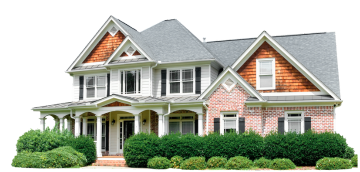Imagine turning your dusty loft into a bright new bedroom, office, or studio without the endless mess of builders in your home. That’s exactly what a modular loft conversion offers.
Instead of months of hammering and dust, most of the work is done off-site in a factory. Your loft will arrive ready-made, lifted into place, and finished in a matter of weeks, not months. It’s quicker, cleaner, and far less stressful than traditional methods.
If you’ve been asking yourself, “How can I get more space without a huge building project?” This guide will help you get your answers. We will break down how modular loft works, its benefits, cost, and whether your home is the right fit.
What is a Modular Loft Conversion?
A modular loft conversion is sometimes called a “prefab loft conversion,” which is a modern way of adding space to your home without months of on-site building work. Instead of constructing everything in your loft from scratch, most of the new space is built in a factory. These prefabricated sections, often fully insulated and pre-fitted with windows, wiring, and even plumbing, are then delivered to your property and carefully lifted into place, usually with a crane.
Once installed, the modular loft is connected to your existing home, then add the finishing touches like staircases and interior decor on-site. The results you will see is high quality, ready-to-use loft room that can be added in weeks rather than months. You can also take it as ordering a custom-designed room that’s built off site, then simply assemble at your home.
Comparing Modular loft vs traditional loft Conversions
When you are weighing up a prefab loft conversion against a traditional one, the biggest difference comes down to how the space is built. With a modular option, your loft is designed and built in a factory, delivered to your home, and installed quickly with minimal disruption.
Traditional conversions, on the other hand, are built piece by piece on-site, which often means longer timelines, more mess, and higher chances of unexpected delays.
| Difference | Modular loft | Traditional loft |
| Speed | Can be completed in weeks | May take several months |
| Disruption | Less dust, noise and builders in your home everyday | Usually means scaffolding, constant tradespeople and more upheaval |
| Cost control | Price more, clearly upfront | Can face cost overrun if problems appear during construction |
| Flexibility | More limited to standard designs | Designed for any roof shape or layout |
So, if you need speed and convenience, modular may be the smarter choice. But if you’re after maximum flexibility and bespoke finishes, traditional might suit better.
Learn More About Hip to gable Loft Conversion here
Future of Modular Loft Conversion
The future of home extension is changing, and modular loft conversions are right at the center of it. With more homeowners looking for extra space without the stress of long builds, the demand for prefab loft conversions is set to rise. The big advantage is speed; factories can build modules while your home is being prepared, meaning less waiting around and fewer delays caused by the weather.
We’re also seeing exciting innovations. Manufacturers are now offering more flexible layouts, so you’re no longer limited to “one-size-fits- all ” designs. Expect to see eco-friendly materials, smarter insulation, and even pre-installed energy efficient systems becoming standard in modular loft. For tech-savvy homeowners, future design could also come with smart wiring and home automation already built-in.
As the UK housing market continues to tighten, modular lofts are becoming an attractive way to add value quickly. They’re also gaining wider acceptance among planners and councils, which means approval will likely become simpler over time. Put simply, the future looks bright, faster builds, more customisation, greener options and even better value of money.
Learn more about Mezzanine Loft Conversion here
Which homes are suitable for a prefab loft conversion?
While some houses aren’t ideal candidates for a prefab loft conversion, this clever solution works for many homeowners across the UK. The major caveat concerns the overall structure of your roof and the layout of your property to deliver and crane in modules. Here’s what actually works best:
- Victorian and Edwardian terraces – These properties usually have steeply pitched roofs and plenty of head height, and are therefore particularly suited to the design of a modular loft.
- Semi-detached homes – Uncomplicated rooflines and fair garden access that allows for a smoother and more cost-effective install.
- Contemporary Single Dwellings – Many new houses have great big roof voids, and they are not doing anything that can be converted into usable space using prefabricated modules.
- Bungalows – Many bungalows have a lot of roof space available and easy access, making them models for modular extensions.
However, some households may encounter struggles. If you’ve got a complicated roof line on the house, limited crane access, or an unusual shape to the structure, it may take more planning or even a mixture of modular and stick-built construction.
The simplest way to see whether your home is suitable is to have a survey carried out by an architect or loft specialist. They’ll also investigate roof height, pitch, structural strength, and access routes to determine whether a prefab loft is the best choice for you.
Learn more about Bungalow Loft Conversion here
Limitations of Modular Loft Conversions
For everything that the modular loft conversion has going for it, it is quick, efficient, and minimises the inconvenience to the rest of the house; it is not for every home. Like any construction method, there are a few limitations you’ll have to consider before deciding if it’s a fit for you.
Access and Delivery Issues
Factory-made modules must be transported to your property. If your home is on a narrow street, lacks rear access, or is surrounded by obstacles like power lines, delivery, and craning the module into place can be challenging and occasionally expensive.
Roof Shape Restrictions
Not all roof designs are eligible. Houses with complicated rooflines, hipped roofs, or non-standard pitches, for instance, may also need substantial modifications before they can even fit a module. This may negate the time-saving benefit that modular lofts tend to provide.
Limited Design Flexibility
As the modules are built off site, they frequently use standard designs. Some level of customisation is an option, but this may not grant as much creative freedom as a fully customised, traditional loft conversion.
Size and Transport Constraints
Modules will only come in sizes that can be accommodated on lorries and suspended from cranes. If you’re dreaming of a very large loft, or one with unusually shaped proportions, modular construction might not make the most sense.
On-Site Work Still Needed
While most of the build happens off-site, you will need work done at home. On-site, the foundations, the staircases, the insulation, and the utility connections all have to be installed. That means you will not buck disruption altogether.
Planning and Regulations
At local levels, however, there could be different treatment of modular projects and/or a need for more detailed drawings or approvals. You might want to double check with your planning officer before you proceed.
Learn more about Mansard Loft Conversion here
Do you need planning permission for a Modular Loft Conversion?
Should we need planning permission for a modular loft conversion is the most asked question by the UK homeowners. The good news is that you may often build a modular loft conversion under permitted development rights. This means you will not always need full planning permission. It depends on whether the conversion satisfies certain conditions.
For example:
- No part of the extension should go higher than your existing roof.
- Dormers on the front slope of any roof must not stick out past its edge.
- The materials used should match those in the rest of your home.
- No development is permitted for raised platforms, balconies, and verandas.
If your design stays within these limits, you may often just get building regulations approval. That ensures that the work is safe, in the correct position, and adequately strong.
In certain cases, however, planning permission is needed. If your home is in a conservation area, listed, or you need to construct a larger dormer which would alter the roofline significantly, then it is necessary to go to your local planning authority and apply for approval.
In summary, most modular loft conversions are within permitted development, but it is worth alerting your local council or builder of full-scale plans anyhow. A little forethought now can avoid serious delays down the line.
Learn More About Dormer Loft Conversion here
How much does a prefabricated loft conversion cost in the UK?
Looking for prefabricated loft conversion cost? Well, the costs depend on the size of your loft, design choices, and level of finish. Here’s a quick look:
| Types of prefab loft | What’s included | Average cost (UK) |
| Basic modular loft | Simple design, pre-built structure,minimal internal finishes | £25,000-£40,000 |
| Mid-range prefab loft | Standard dormer, insulation, electrics, staircases, basic finishes | £40,000-£60,000 |
| High-end modular | Larger dormer, ensuite bathroom, premium finishes, bespoke features | £60,000-£80,000+ |
| Prefabricated dormer cost | Factory-made dormers installed on pitched roof | £30,000-£50,000 |
Key factors that influence cost:
- Size and complexity of the modular
- Roof type and structural requirements
- Access for cranes and delivery
- Plumbing and electrical needs
- Level of interior finish
In comparison, a traditional loft conversion can take longer and often costs slightly more due to extended labour and weather delays.
FAQ’S
Yes, loft conversions generally boost your property value. A well–executed modular loft extension can add 15 to 20% in value, especially in areas with housing shortages. The quality and aesthetics of prefab units matter,factory finishes can impress buyers.
Absolutely, when made with high quality material and engineered to standards. Modular units undergo factory inspections, and once installed, they are integrated into the home according to building regulations, yielding solid, last longing results.


 Describe your needs
Describe your needs
 it only takes 30 seconds
it only takes 30 seconds